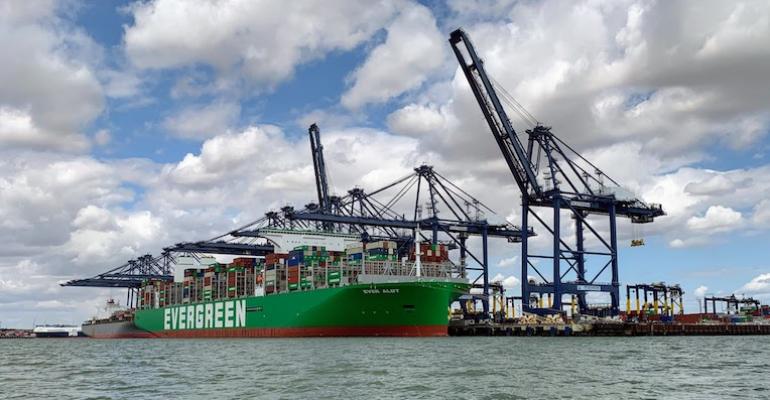Container spot rates are starting to decline sharply from their highs and last week the Shanghai Containerized Freight Index (SCFI) dropped 9.7% week-on-week down 306.56 points to 2846.42 points on 2 September and is down 32% quarter-on-quarter. The SCFI stood at a record high of 5,051 points in January this year.
The record high spot rates seen over the last 18 months have been driven by exceptionally high utilisation rates, very close to 100%, on the main deepsea trades, at which point Lars Jensen, CEO of Vespucci Maritime said the “pricing curve become almost vertical”.
“This is the point where there is physically no more capacity at all whilst there is excess demand in the market. The data shows that it is at this point spot rates go to the historical highs we have seen over the past 18 months,” he said in report published by the Baltic Exchange.
Ultilisation rates on the Transpacific trade have dropped to 90% or below over the last three months, below what Jensen says is the 91 – 95% threshold on the trade that drove record high spot rate levels. Similarly on Asia – Europe utilisation has dropped to 81% or below over the last five months while the threshold is around 85% to drive a near vertical pricing curve.
“This means that there is no structural support for the pricing dynamic where insufficient demand leads customers to overbid on pricing to ensure available space on the vessels,” Jensen said. Further weakening of spot rates going forward is expected.
A similar conclusion is drawn by Parash Jain, Head of Shipping & Ports & Asia Transport Research, HSBC Global Research. “As vessel utilisation declines from 95-100%, skyrocketed spot freight rates could lose support quickly and revert back to a more normalised level,” he said in a note sent on Monday.
HSBC forecasts spot rates could fall another 58% in 2023 and 37% in 2024 on average before reaching the bottom.
Jensen noted that bottlenecks in global container trades had decreased with 9.8% of the global fleet unavailable due to delays in July compared to 13.8% in January. Current levels are still well above the 2% seen in normal market conditions, however, does in effect release more capacity into the market at a time when global container volumes are falling.
What the sharp falls in spot rates will mean for long-term contract rates and container line profitability is a point of contention. Last week HSBC’s Jain forecast an 80% drop in profitability for container lines in 2023 – 24. While Blue Alpha Capital founder John McCown believes too much emphasis is being placed on spot at that while container lines maybe at or near their peak of profitability a collapse is not imminent.
Copyright © 2024. All rights reserved. Seatrade, a trading name of Informa Markets (UK) Limited.
Add Seatrade Maritime News to your Google News feed.  |

